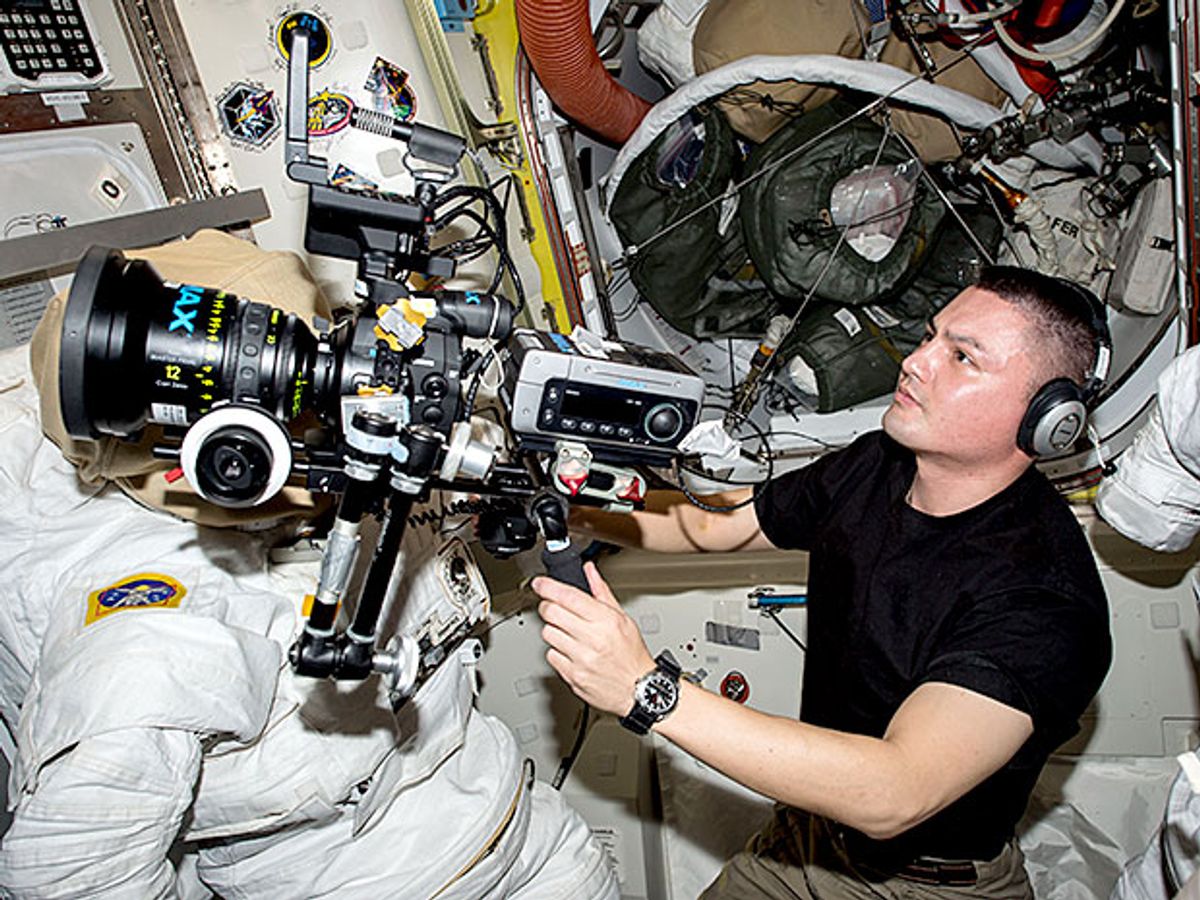“There’s no way you can match what you see with your own eyes—but this is close,” says Barry “Butch” Wilmore. As part of the crew of the International Space Station, Wilmore was one of the astronauts-turned-cinematographers who captured footage for the latest IMAX documentary, A Beautiful Planet, which opens today, 29 April.
A Beautiful Planet takes full advantage of the vantage point of the ISS and its multi-windowed viewing cupola. The mesmerizing glowing veils of the aurorae, the night-time splatter of cities across the continents, and swirling storm systems fill the giant IMAX screen in 3-D, leaving a lasting impression of wonder.
The movie also includes many scenes of life on board the ISS, giving some of the best views to date about what a working day is really like in a cluttered collection of floating boxes. The moviemakers’ goal in juxtaposing the interior shots with those aimed outward toward the blue ball we call home is to reinforce A Beautiful Planet’s environmental theme. The point: Just as considerable effort is required to keep a space station habitable, effort also needs to be put into limiting ecological damage on spaceship Earth so as to keep it habitable too.
Of course, A Beautiful Planet is not first IMAX movie shot in space. Indeed, Toni Myers, the movie’s director and producer also helmed 2002’s Space Station 3D and 2010’s Hubble 3D. But what’s different is that A Beautiful Planet was shot entirely using digital cameras, dramatically changing the nature of the filmmaking process.
Myers explained that the earlier IMAX cameras and their film packs were so bulky that, “You got seven minutes of footage on a mission, in 30 second takes. And every take was the first and only take.” In contrast, the digital cameras allowed as many takes as were needed; footage was stored on small external hard drives sent back to Earth with returning astronauts or Dragon cargo ships. In addition, relatively low resolution versions could be directly downlinked to the producers on the ground. This allowed collaboration and consultation about how a shot might be reframed or exposure adjusted, or discussion on suggestions for previously unplanned shots.
However, the moviemaking secret of A Beautiful Planet is that the astronaut filmmakers actually took very little video of the Earth. It was realized that the digital video cameras currently available don’t have the resolution needed for the enormous IMAX screen. Instead, says James Neihouse, the film’s director of photography, still digital cameras such as the Canon EOS C500 EF were used. These captured 4K images at four frames per second in daylight, and two frames per second in the Earth’s shadow. About 250,000 still frames—totaling about 11 terabytes of raw data—were captured in this way. Back on Earth, software was used to interpolate additional in-between frames to create video files with smooth motion. The result was roughly 18 terabytes of footage that had to be edited down for the finished movie.
Opting for digital cameras over film also allowed images to be captured with very high dynamic ranges, so that dimmer features like stars or the aurorae were not washed out by bright objects in the foreground. The result is spectacular scenes of the sort that would have been previously impossible to see on a screen without resorting to post-production editing wizardry like compositing separately shot footage together or using computer generated graphics.
The astronauts who captured the footage worked in their spare time outside their official scientific and engineering jobs. Neihouse led the team that got the astronauts up to speed on handling the cameras. He notes that the training involved breaking the astronauts of some of the videography habits that NASA had trained into them, such as ensuring that everyone in a shot was oriented with their feet pointing the right direction. This “1-g mode” is good for a press conference beamed from space, but doesn’t convey the true topsy-turvy nature of life onboard the station. Neihouse laughs that he’s “the only [director of photography] in the world who has to train their first unit how to shoot.”
Stephen Cass is the special projects editor at IEEE Spectrum. He currently helms Spectrum's Hands On column, and is also responsible for interactive projects such as the Top Programming Languages app. He has a bachelor's degree in experimental physics from Trinity College Dublin.



